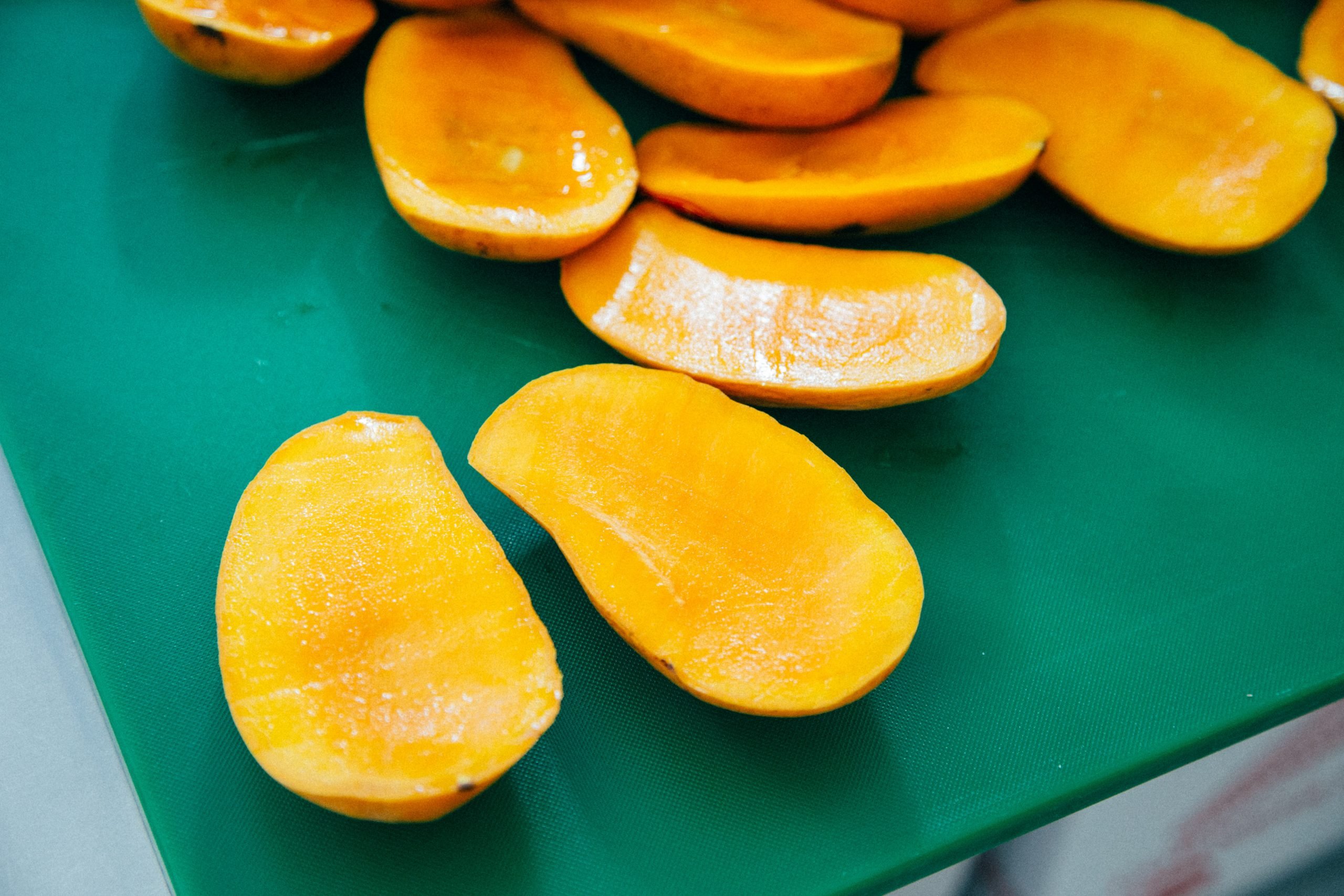
Love a good Mexican Fruit? In this guide, let’s explore traditional Mexican fruits (Fruits in Mexico) to try when visiting Mexico!
Mexico is a country bursting with vibrancy, from its rich culture and traditions to its diverse and delicious cuisine. An integral part of this culinary landscape is the vast array of fruits that grow throughout the country. This guide will introduce you to the exotic fruits of Mexico, the regions they originate from, and how they’re used in traditional Mexican dishes.
👉🏼 Related Travel Guides for Mexico: Mexico Sim Cards, Best Travel Insurance for Mexico
Read here best Mexican breakfast, the most popular non alcoholic drinks, drinks in Mexico and Vegetarian Food in Mexico.
Mexico’s Fruit Landscape
Mexico’s diverse climate ranges from arid deserts to tropical rainforests, allowing a wide variety of fruits to flourish. From the humble guava to the exotic dragon fruit, Mexico’s fruit offerings are as diverse as they are flavorful. The country is particularly known for its citrus fruits, melons, and tropical fruits, which are often enjoyed fresh or used in cooking and beverages.
Looking for the best travel backpack to bring to your trips, you can No products found.
Popular Fruits in Mexico
Mango

Mango is one of Mexico’s most beloved fruits. Grown predominantly in the states of Nayarit, Sinaloa, and Chiapas, Mexican mangoes are known for their sweetness and creamy texture. They’re often eaten fresh, but are also a popular ingredient in smoothies, salads, and desserts.
Guava (Guayaba)
Guava, known as ‘guayaba’ in Spanish, is a small, round fruit with a sweet-tart flavor. It’s enjoyed fresh, made into juice, or incorporated into sweets like candies and jellies. The city of Calvillo in Aguascalientes state is known as the ‘world capital of guava’.
Papaya
Mexico is one of the world’s top producers of papaya, a tropical fruit known for its sweet, melon-like taste. Papaya is often served fresh as a breakfast food or dessert, but can also be used in salads, smoothies, and salsas.
Prickly Pear (Nopal)
Prickly pear, also known as ‘nopal’ or ‘tuna’ in Mexico, is the fruit of the Opuntia cactus. It has a sweet, slightly tart flavor and a texture similar to watermelon. It’s eaten fresh or used to make juice, jelly, and even wine.
Avocado
Mexico is the world’s top producer of avocados, a fruit that’s a staple in many Mexican dishes. Avocados are creamy and versatile, used in everything from guacamole to salads, and even desserts.
Lime
Limes are essential in Mexican cuisine, used to accent the flavors in a wide array of dishes and drinks. They’re grown year-round, particularly in the states of Michoacán and Guerrero.
Pineapple
Pineapples thrive in Mexico’s tropical climate, especially in the states of Veracruz and Oaxaca. They’re often used in fruit salads, drinks, salsas, and grilled as a side dish.
Exotic Fruits in Mexico
Dragon Fruit (Pitaya / Pitahaya)
Native to Central America but now grown also in Mexico, pitahaya is a tropical fruit known for its vibrant pink skin and speckled white flesh. The fruit is mildly sweet and can be eaten raw or used in smoothies and desserts.
Dragon fruit, or ‘pitaya’, is native to Mexico and is known for its vibrant pink skin and speckled flesh. It’s mildly sweet and often enjoyed fresh, but is also used in smoothies, salads, and desserts.
Zapote

Zapote is a term that covers several different fruits in Mexico, including the mamey zapote, black zapote, and white zapote. Each variety has its own unique flavor, ranging from sweet and creamy (mamey) to slightly tart (white zapote).
There are different types of sapotes in Mexico, like the mamey sapote and the black sapote. Mamey sapote has an orange-red pulp with a sweet, almond-like flavor, while the black sapote is noted for its custard-like, chocolatey flesh.
Chicozapote (Sapodilla)
Chicozapote, or sapodilla, is a brown, round fruit that’s similar in size to an apple. It has a sweet, malty flavor and is often eaten fresh, but can also be used in desserts.
Chirimoya (Custard Apple)
Chirimoya, also known as custard apple, is a heart-shaped fruit with a creamy texture and sweet taste, reminiscent of banana, pineapple, peach, and strawberry. It’s often eaten fresh or used in desserts.
Guanabana (Soursop)
Guanabana, or soursop, is a large, spiny green fruit with a custard-like texture and a sweet-tart flavor. It’s commonly used to make beverages, ice creams, and other sweet treats.
Guava
Guava is a common fruit in Mexico that’s often consumed raw or turned into juices, jellies, and pastries. It has a unique sweet and slightly tart taste, with a texture that combines the crunchiness of pears and the juiciness of apples.
Tamarind
Tamarind is a sour-sweet fruit that’s often used in Mexican cooking for marinades, sauces, and drinks like tamarind water (‘agua de tamarindo’).
Fruits and Mexican Cuisine
Fruit is a fundamental part of Mexican cuisine. Whether served fresh, juiced, cooked, or fermented, the variety and versatility of Mexican fruits add depth and complexity to the country’s dishes. From the sweet tang of mango salsa to the refreshing bite of a guava agua fresca, fruits bring color, flavor, and nutritional value to the Mexican table.
Seasonal Fruits in Mexico
Mexico’s diverse climate and terrain allow for a wide variety of fruits to grow throughout the year. During the dry season (November to May), fruits like guava, strawberries, and oranges are at their peak. The rainy season (June to October), on the other hand, welcomes fruits like mangoes, pitayas, and lychees.
Pricing of Fruits in Mexico
The price of fruits in Mexico varies depending on the type of fruit, the season, and the location. On average, locally grown fruits are quite affordable. For instance, a kilo of bananas can cost as low as $0.50 USD, while a kilo of guava may range from $1 to $2 USD. Exotic or out-of-season fruits may cost slightly more. It’s worth noting that prices in street markets are often cheaper than in supermarkets.
By exploring local markets, not only can you save money, but you also get the chance to experience Mexico’s rich culture and engage with local vendors who can share more about the unique fruits of their country.
National Fruit of Mexico
The national fruit of Mexico is none other than the prickly pear cactus, also known as “tuna” in Spanish. This might come as a surprise to many since a cactus is usually associated with arid landscapes, not luscious fruit. However, the prickly pear is a testament to Mexico’s biodiversity and resilience.
The prickly pear cactus produces fruits that are plump and colorful, ranging from yellow and green to pink and red. The fruit’s flesh is sweet and refreshing, often described as a cross between watermelon and bubblegum. Aside from being a delightful treat, the prickly pear is also used in Mexico’s traditional medicine for its potential health benefits.
Eating the prickly pear fruit is a unique experience. After carefully removing the small thorns on its skin, you can cut it open and scoop out the juicy interior. Alternatively, you can peel off the skin and bite directly into the fruit. It’s a staple in Mexican diets and is commonly used in salads, drinks, jams, and even candies.
By trying the national fruit of Mexico, you are immersing yourself in the country’s culture, tasting its history, and appreciating its natural wonders. If you visit Mexico, don’t miss the chance to taste this unique fruit and the many dishes and drinks it inspires.
Health Benefits of Mexican Fruits
The vibrant fruits of Mexico not only tantalize the taste buds, but they also offer a plethora of health benefits:
Avocado: Packed with healthy fats and fiber, avocados help reduce bad cholesterol levels and promote heart health.
Papaya: High in vitamin C, folate, and antioxidants, papaya boosts the immune system and aids in digestion.
Cactus Fruit (Prickly Pear): Rich in antioxidants, dietary fiber, and vitamin C, it aids in digestion, boosts immune function, and promotes skin health.
Mango: An excellent source of vitamins A and C, mangoes promote eye health, boost immunity, and aid in digestion.
Guanabana (Soursop): Known for its anti-inflammatory and antioxidant properties, it’s used in traditional medicine to treat various ailments.
Fruit Festivals in Mexico
Mexico celebrates its abundant fruit harvests with various fruit-themed festivals throughout the year:
Strawberry Fair in Irapuato: Known as the “World’s Strawberry Capital,” Irapuato holds a yearly fair to celebrate its strawberry harvest. The event includes a large array of strawberry-based foods, agricultural displays, and entertainment.
Mango Festival in Tabasco: This annual festival in Tabasco celebrates the mango harvest with a grand parade, concerts, dances, and, of course, plenty of mango-based foods and drinks to enjoy.
Feria del Nopal (Cactus Fruit Fair) in Milpa Alta: This annual festival honors the cactus fruit, an essential part of Mexican cuisine. Attendees can sample various dishes made with cactus fruit and even partake in cactus fruit harvesting.
By adding these sections, your readers will gain more in-depth knowledge about the diversity of fruits in Mexico, their health benefits, and the cultural significance fruits hold in Mexican society.
FAQ
1. What fruits are native to Mexico?
Many fruits are native to Mexico, including papaya, guava, prickly pear, dragon fruit, and zapote.
2. What is the most popular fruit in Mexico?
Mango is one of the most popular and widely consumed fruits in Mexico.
3. Can I find these fruits outside of Mexico?
Many Mexican fruits, like mango, guava, and papaya, are exported and can be found in grocery stores around the world. However, some fruits, like zapote and chicozapote, are more difficult to find outside of Mexico.
4. What Mexican dishes use fruit?
Fruits are used in many Mexican dishes. They can be found in salsas, desserts, beverages like agua frescas and margaritas, and are also enjoyed fresh.
5. Is fruit commonly eaten for breakfast in Mexico?
Yes, fruit is commonly eaten for breakfast in Mexico. This can include fresh fruit, fruit juices, or dishes like chilaquiles with salsa made from fruits like tomatillos
Final Thoughts on Mexican Fruit and Traditional Fruits in Mexico
Mexican fruits, whether familiar or exotic, offer a captivating journey into the country’s diverse landscape and culinary traditions. Each piece of fruit carries with it a story of the region it comes from, adding depth to Mexico’s rich cultural tapestry. Whether you’re exploring a bustling market or enjoying a homemade Mexican meal, these fruits offer a taste of Mexico’s vibrant and flavorful soul.
About the Author: Ruben, co-founder of Gamintraveler.com since 2014, is a seasoned traveler from Spain who has explored over 100 countries since 2009. Known for his extensive travel adventures across South America, Europe, the US, Australia, New Zealand, Asia, and Africa, Ruben combines his passion for adventurous yet sustainable living with his love for cycling, highlighted by his remarkable 5-month bicycle journey from Spain to Norway. He currently resides in Spain, where he continues sharing his travel experiences with his partner, Rachel, and their son, Han.
